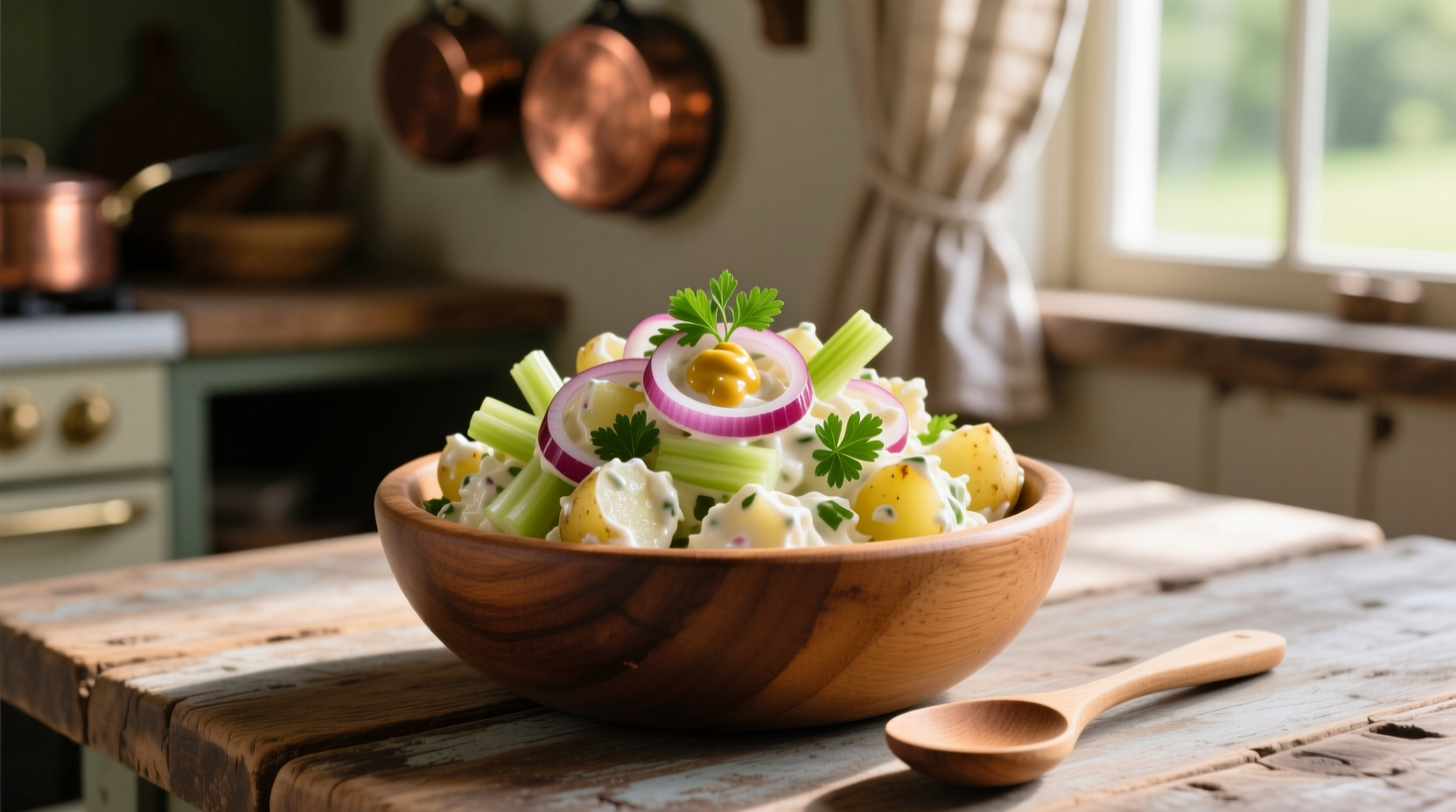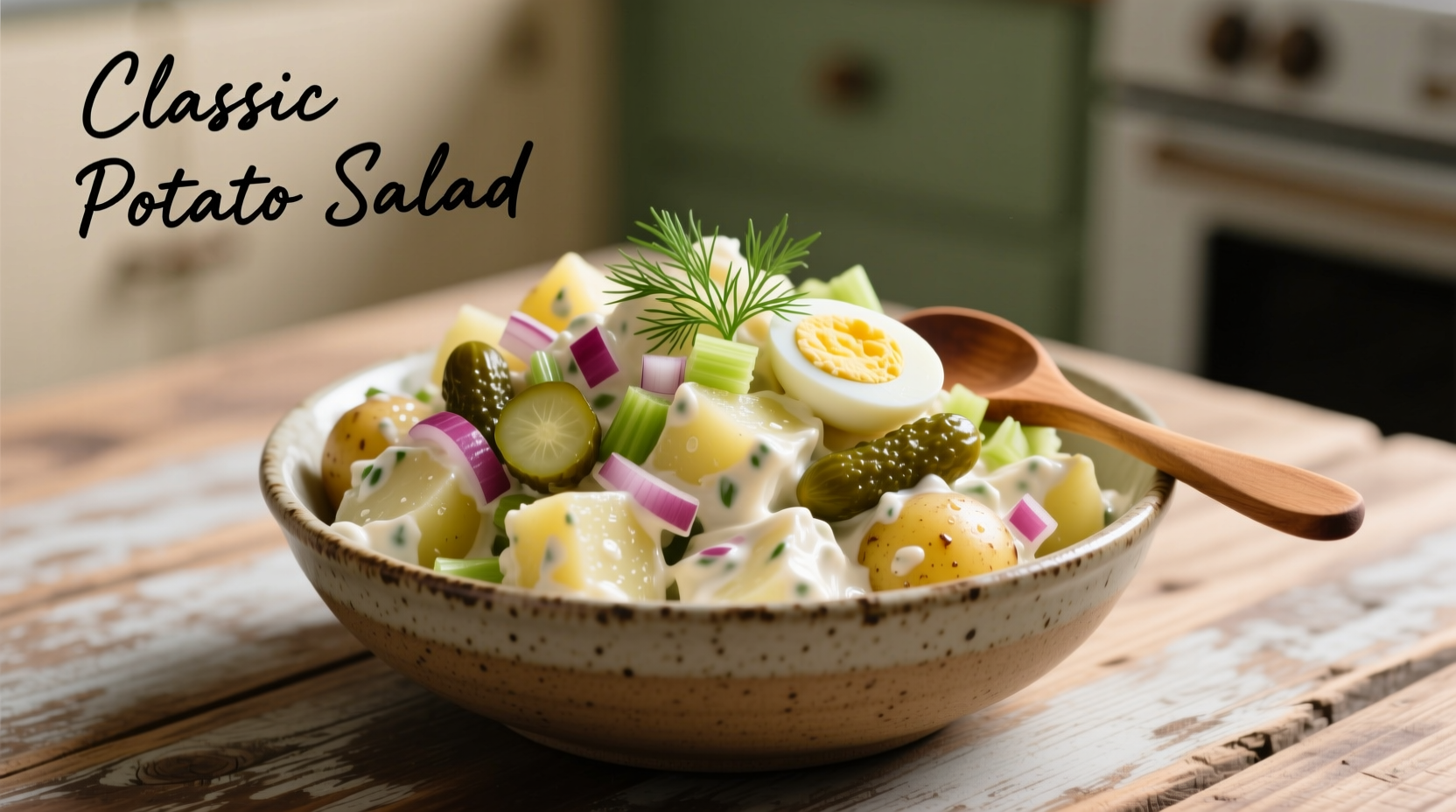Classic potato salad combines waxy potatoes, creamy dressing, and aromatic seasonings. The best versions use properly cooked potatoes cooled before mixing, with a balanced dressing that coats but doesn't drown the ingredients. German, American, and Russian variations differ primarily in dressing base (mustard vs. mayo vs. sour cream) and added ingredients like bacon, pickles, or fresh herbs.

The Evolution of Potato Salad: From European Courts to Picnic Tables
Understanding potato salad's journey helps appreciate its modern variations. Originally developed in 18th century Europe, this dish transformed from an aristocratic delicacy to a beloved picnic staple through distinct historical phases:
| Time Period | Key Developments | Geographic Spread |
|---|---|---|
| 1750-1800 | First documented in German cookbooks using oil and vinegar | Germany, France |
| 1820-1860 | Mayonnaise-based versions emerge; appears in American cookbooks | Spread across Europe and North America |
| 1880-1920 | Commercial mayonnaise enables wider preparation; becomes picnic staple | Global spread through immigration |
| 1950-Present | Regional variations solidify; food safety awareness grows | Worldwide with distinct local interpretations |
This culinary evolution demonstrates how potato salad adapted to local ingredients and preferences while maintaining its core identity as a chilled potato-based dish. According to the USDA Agricultural Research Service, potato salad's transformation reflects broader patterns in how immigrant communities preserve culinary traditions while adapting to new environments.
Global Potato Salad Variations Compared
While all potato salads share fundamental elements, regional differences create distinct flavor profiles and textures. Understanding these variations helps select the perfect style for your occasion:
| Variation | Dressing Base | Signature Ingredients | Best Serving Occasion |
|---|---|---|---|
| German | Mustard-vinegar | Bacon, onions, fresh dill | Meat-focused meals, Oktoberfest |
| American | Mayonnaise | Hard-boiled eggs, celery, sweet pickles | Picnics, BBQs, potlucks |
| Russian | Sour cream | Beets, apples, fresh herbs | Holiday gatherings, Easter |
| French | Vinaigrette | Green beans, cornichons, tarragon | Elegant dinners, summer lunches |
Selecting the Perfect Potatoes for Your Salad
Choosing the right potatoes makes or breaks your salad. Waxy varieties maintain their structure when cooked and chilled, while starchy potatoes become mushy. For optimal results:
- Yukon Gold - The ideal compromise with creamy texture and buttery flavor that holds shape well
- Red Bliss - Excellent for German-style salads with their firm texture and thin skins
- Fingerling - Adds visual appeal to gourmet presentations with their unique shape
- Avoid Russets - Their high starch content causes disintegration in chilled preparations
According to the Potato Association of America, Yukon Gold potatoes contain just the right starch-to-moisture ratio (16-18% starch) for salad applications, maintaining structural integrity while absorbing dressing flavors.
Professional Preparation Techniques for Flawless Results
Achieving restaurant-quality potato salad at home requires attention to specific preparation details that most home cooks overlook:
Perfect Potato Cooking Method
Cook potatoes before peeling them to prevent waterlogging. Add 1 tablespoon vinegar or lemon juice per quart of cooking water to maintain firmness. Cool potatoes completely before mixing—adding dressing to warm potatoes causes mayonnaise to break and potatoes to absorb too much dressing.
Dressing Balance Principles
The ideal dressing-to-potato ratio is 1:3 by volume. Start with less dressing, then gradually add more until potatoes are lightly coated but not swimming. For American-style salads, mix mayonnaise with 25% sour cream for enhanced flavor complexity without compromising texture.
Ingredient Integration Sequence
Add ingredients in this order for optimal flavor distribution: potatoes → dressing → aromatics (onions, celery) → herbs → hard-boiled eggs. This prevents delicate ingredients from breaking down while ensuring even coating.
Common Potato Salad Mistakes and How to Avoid Them
Even experienced cooks make these critical errors that compromise texture and flavor:
Mistake: Cutting Potatoes Before Cooking
Solution: Cook whole or in large chunks to prevent water absorption. Cut after cooling to your desired size.
Mistake: Adding Dressing to Warm Potatoes
Solution: Chill cooked potatoes completely in the refrigerator before mixing with dressing. This prevents dressing breakdown and excessive absorption.
Mistake: Overmixing Ingredients
Solution: Gently fold ingredients together just until combined. Overmixing breaks down potatoes and creates a mushy texture.
Food safety is critical with potato salad. The FDA Food Code specifies that potato salad should not remain in the temperature danger zone (40°F-140°F) for more than two hours. When serving outdoors, nest the serving bowl in ice to maintain safe temperatures.
Serving and Storage Best Practices
For optimal flavor development, potato salad benefits from proper resting time but has specific storage limitations:
- Refrigerate for at least 4 hours before serving to allow flavors to meld
- Store in airtight containers with parchment paper directly on the surface to prevent discoloration
- Consume within 3-5 days for best quality and safety
- Revive leftovers by stirring in 1-2 teaspoons of pickle juice or vinegar to refresh flavors
When serving, consider complementary pairings: German-style pairs beautifully with sausages and sauerkraut, while American-style complements grilled chicken or hamburgers. For elegant presentations, serve in lettuce cups or alongside smoked fish for a gourmet touch.











 浙公网安备
33010002000092号
浙公网安备
33010002000092号 浙B2-20120091-4
浙B2-20120091-4